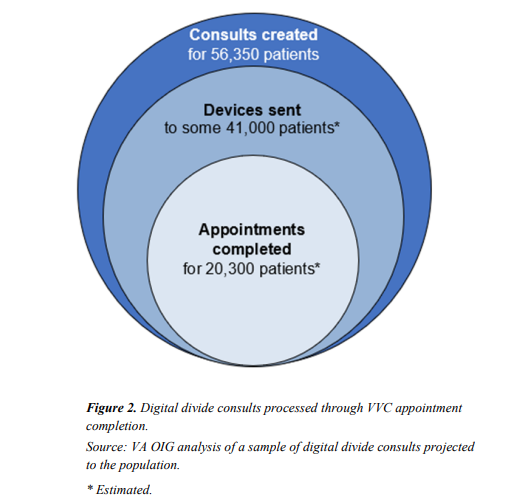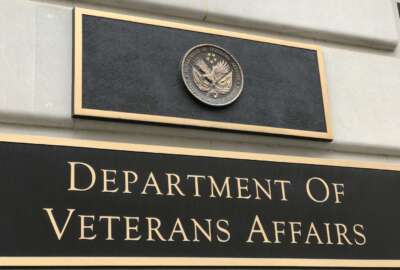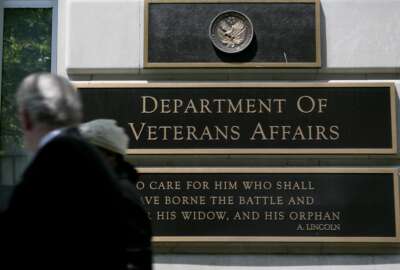
Tens of thousands of tablets VA distributed for telehealth appointments go unused
VHA distributed devices to about 41,000 patients during the first three quarters of fiscal 2021, but 51% of the patients are not using the devices for virtual...
The Veterans Health Administration’s video connect program to bridge the digital divide is two years old, but many of the veterans who loaned iPads through the initiative aren’t actually using the devices to go to virtual appointments.
An Aug. 4 audit report by Office of the Inspector General found VHA distributed devices to about 41,000 patients during the first three quarters of fiscal 2021, but 51% of the patients are not using the devices for virtual appointments.
Now OIG is making 10 recommendations to increase patient’s use of the devices.
During the pandemic, VA social workers partnered with the VHA’s Office of Connected Care to distribute iPads and internet service to eligible patients to connect them with video telehealth appointments.
“VHA’s [standard operating procedure] includes eligibility criteria purposely left broad in light of the pandemic and does not require scheduling the patient for a VA Video Connect appointment,” the audit said.
The devices, which, on average, the VHA provided two weeks after the consult, were not always used to connect to video telehealth. The OIG audit estimated 20,300 patients enrolled in the program, or around 49%, completed a video appointment.
The review estimated more than 10,000 patients had a video appointment scheduled, but did not complete the visit for various reasons, such as technical issues or a cancellation, and never scheduled another virtual appointment.
The OIG report concluded the low completion rates occurred because VHA did not establish clear oversight roles for Veterans Integrated Service Network and medical facility employees, and because the program did not require staff to schedule a virtual appointment for patients with a loaned device.
In addition, the report found that a lag in sending devices could have delayed scheduling and completing the virtual appointments.
Once the device arrives, patients have 90 days to have a virtual appointment. If the device is not used in those 90 days, VHA staff will take it back. Despite the requirement, OIG found VHA did not collect 11,000 unused devices.
When OIG went back to November 2021, VHA’s tablet dashboard showed patients did not use nearly 8,300 of those 11,000 devices.

“The value of the 8,300 devices was about $6.3 million and cost VHA about $78,000 in additional cellular data fees during the period under review,” the audit said.
Although many patients did not use the devices they requested, VHA’s data showed 3,119 patients had multiple devices. In addition, as of January 2022, VHA had a backlog of 14,800 returned devices that needed to be refurbished.
In August 2021, VHA ordered 9,720 additional new devices, totaling about $8.1 million. “The review team determined that VHA could have made better use of approximately $14.5 million in program funds with better device monitoring and retrieval controls and oversight,” the audit stated.
Recommendations from OIG include developing a mechanism to alert the clinics that a patient can be scheduled for a virtual appointment. They also suggest revising procedures to clarify the number of days from consult initiation to device order and adding procedures to prevent and retrieve duplicate devices.
OIG also asked VHA to enhance tracking device packages, create detailed refurbishment reporting and use the data when considering buying new devices.
Copyright © 2025 Federal News Network. All rights reserved. This website is not intended for users located within the European Economic Area.
Abigail Russ is an intern with Federal News Network.
Related Stories

House pulls funding from VA commission to close hospitals in FY 2023 spending bill




